Linear Regression is often used for predicting .
The simple step of Linear Regression is always like:
step1 load your data
step2 plot your data
step3 use Gradien Descent to learn theta
step4 debugging
step5 visualizing CostFunction J of theta
Here is a example of Linear Regression of one variable.
step1: loading data: in Octave Command window,input :
data=load(ex1data1.txt) %then the Octave variable data hava the dataset of this example,
includingX(exclude X0) and y.
X=data(:,1) ; y=data(:,2) %X is variable vector ,y is the result vector
m=length(y) %number of training example
step2:plotting data: in Octave Command window,input :
plot(x, y, 'rx', 'MarkerSize', 10);
ylabel('Profit in $10,000s');
xlabel('Population of City in 10,000s');
step3:Gradient Descent (important) ,including batch gradient descent and stochastic gradient descent,
remember our goal is to get theta:
X = [ones(m, 1), data(:,1)]; % Add a column of ones to x
theta = zeros(2, 1); % initialize fitting parameters
iterations = 1500;
alpha=0.5 ;
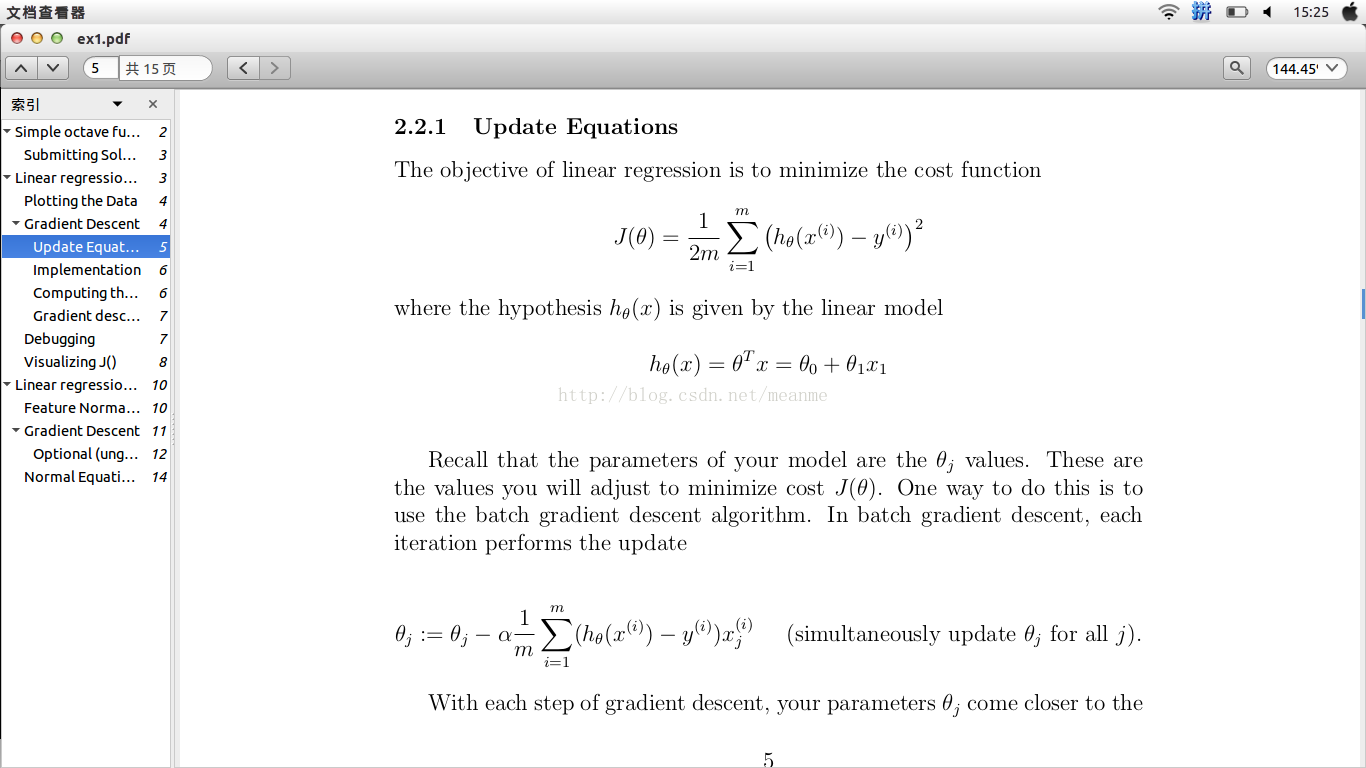
according to J of theta(this is used for checking weather J is on decressing):
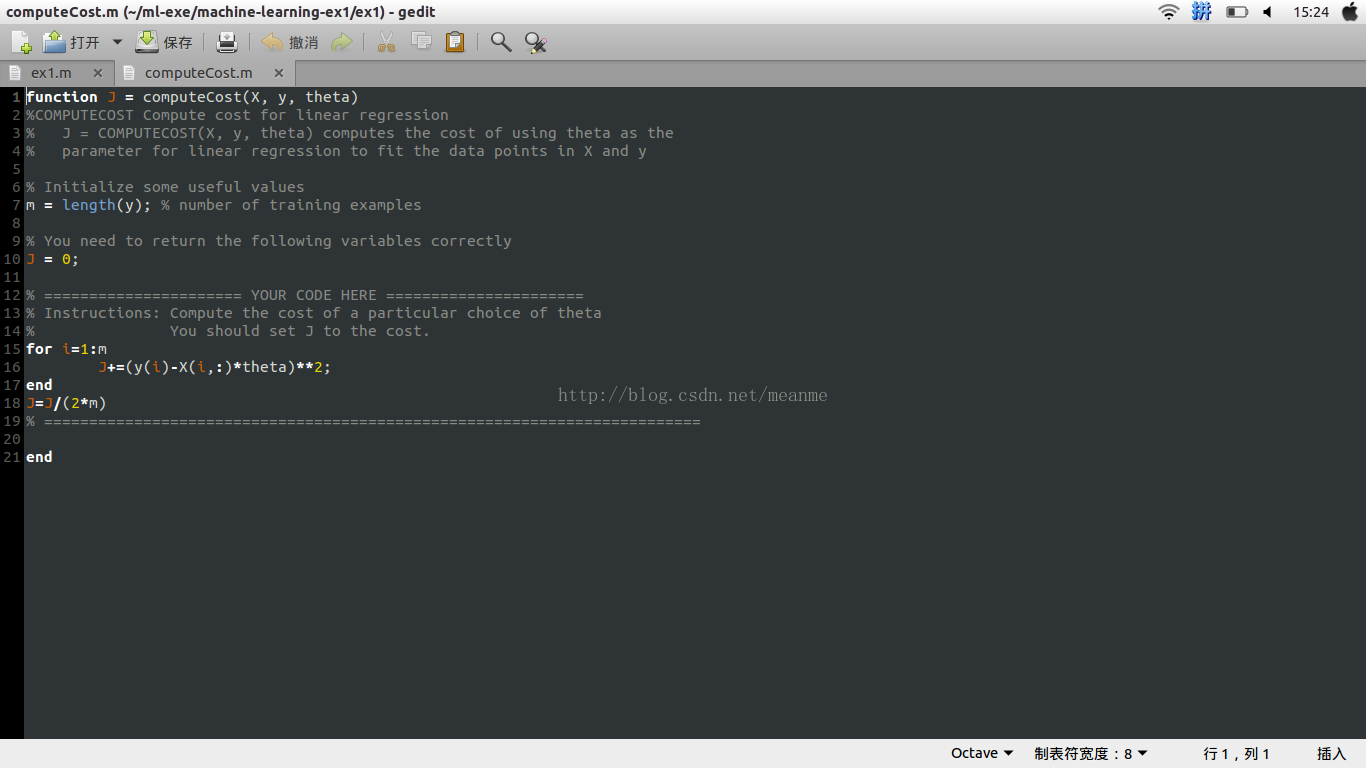
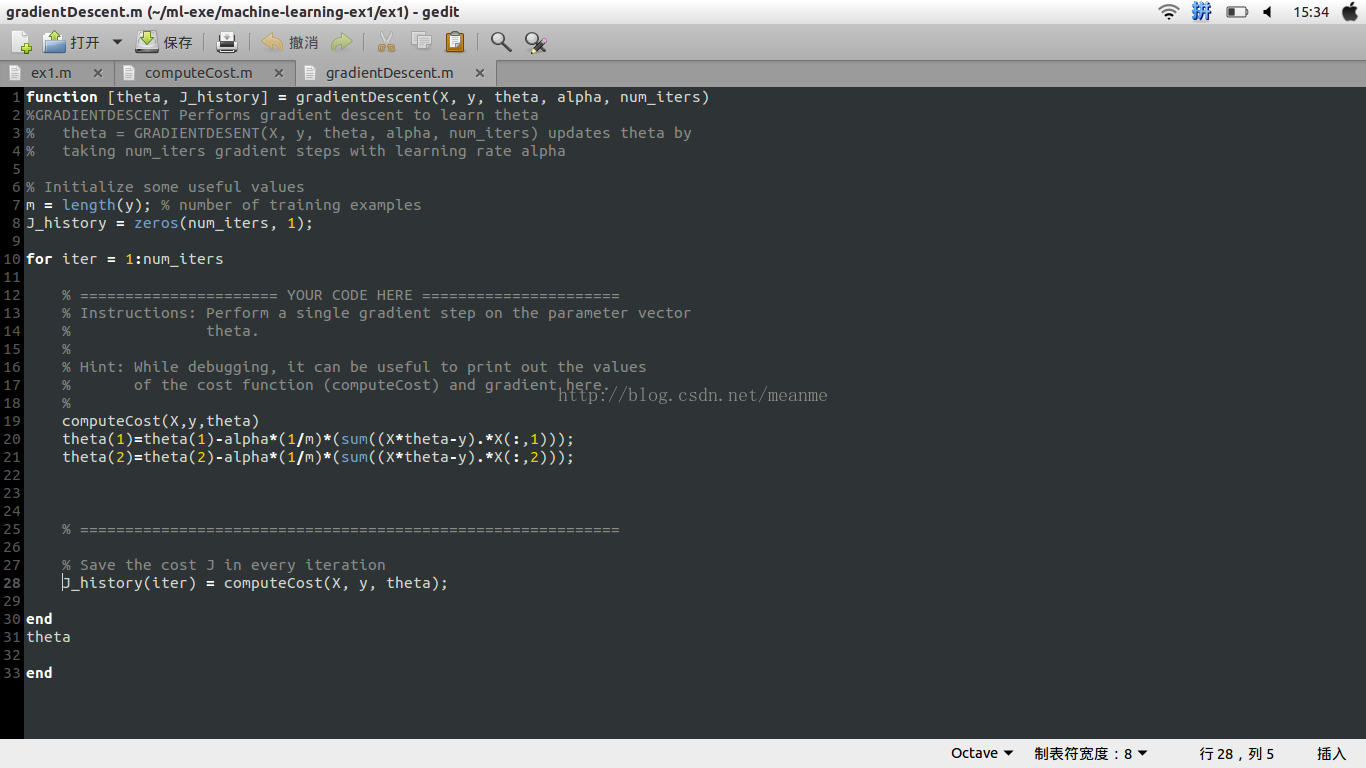
input octave commands:
plot(X(:,2), X*theta, '-')
legend('Training data', 'Linear regression')
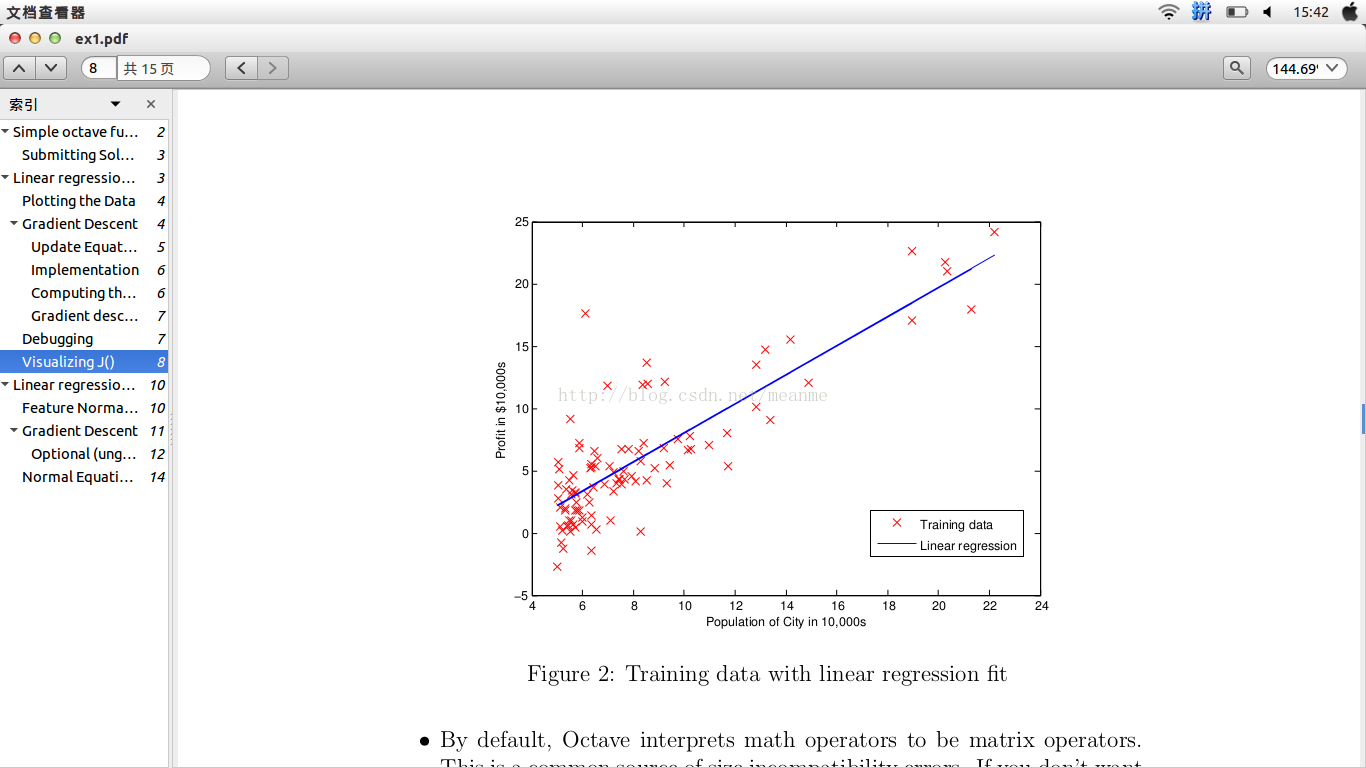
after that ,you now can use your data to predict,i.e:
predict= [1, 3.5] * theta;
step4 debugging:
1) Octave array indices start from one, not zero. If you’re storing θ0 andθ1 in a vector called theta, the values will be theta(1) and theta(2).
2) If you are seeing many errors at runtime, inspect your matrix operations to make sure that you’re adding and multiplying matrices of compatible dimensions. Printing the dimensions of variables with the size command will help you debug.
3) By default, Octave interprets math operators to be matrix operators.This is a common source of size incompatibility errors. If you don’t want matrix multiplication, you need to add the “dot” notation to specify this to Octave. For examples, A*B does a matrix multiply, while A.*B does an element-wise multiplication.
step5 Visualizing J(θ): in order to understand how J(θ) varies with changes in θ0 and θ1 .
input these commands in the picture below:
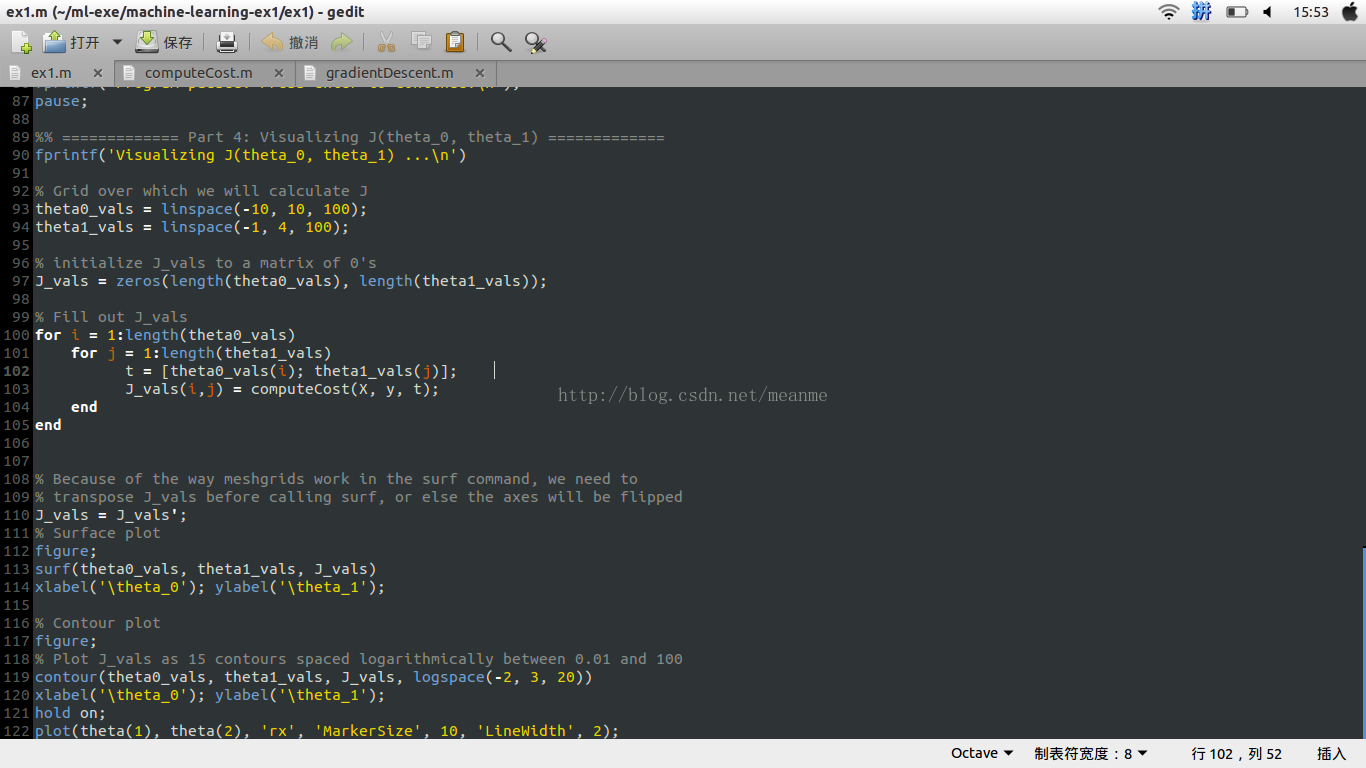
and amazing,U will get a 3-D figure and also a 2-D contour figure
最后
以上就是包容白云最近收集整理的关于Machine Learning by Andrew Ng ---Linear Regression with one variable的全部内容,更多相关Machine内容请搜索靠谱客的其他文章。








发表评论 取消回复